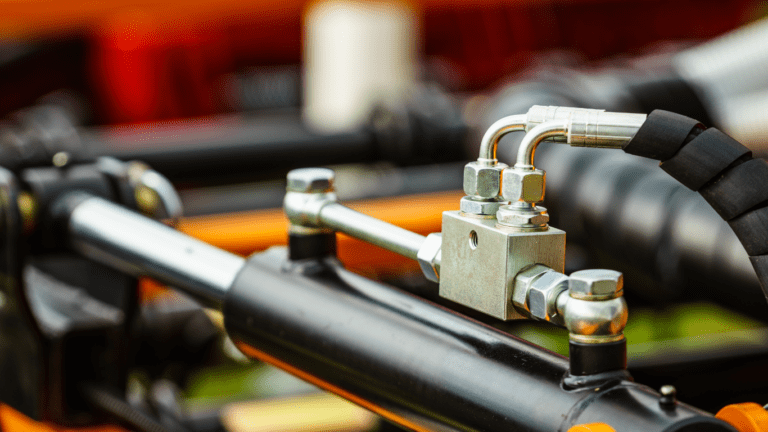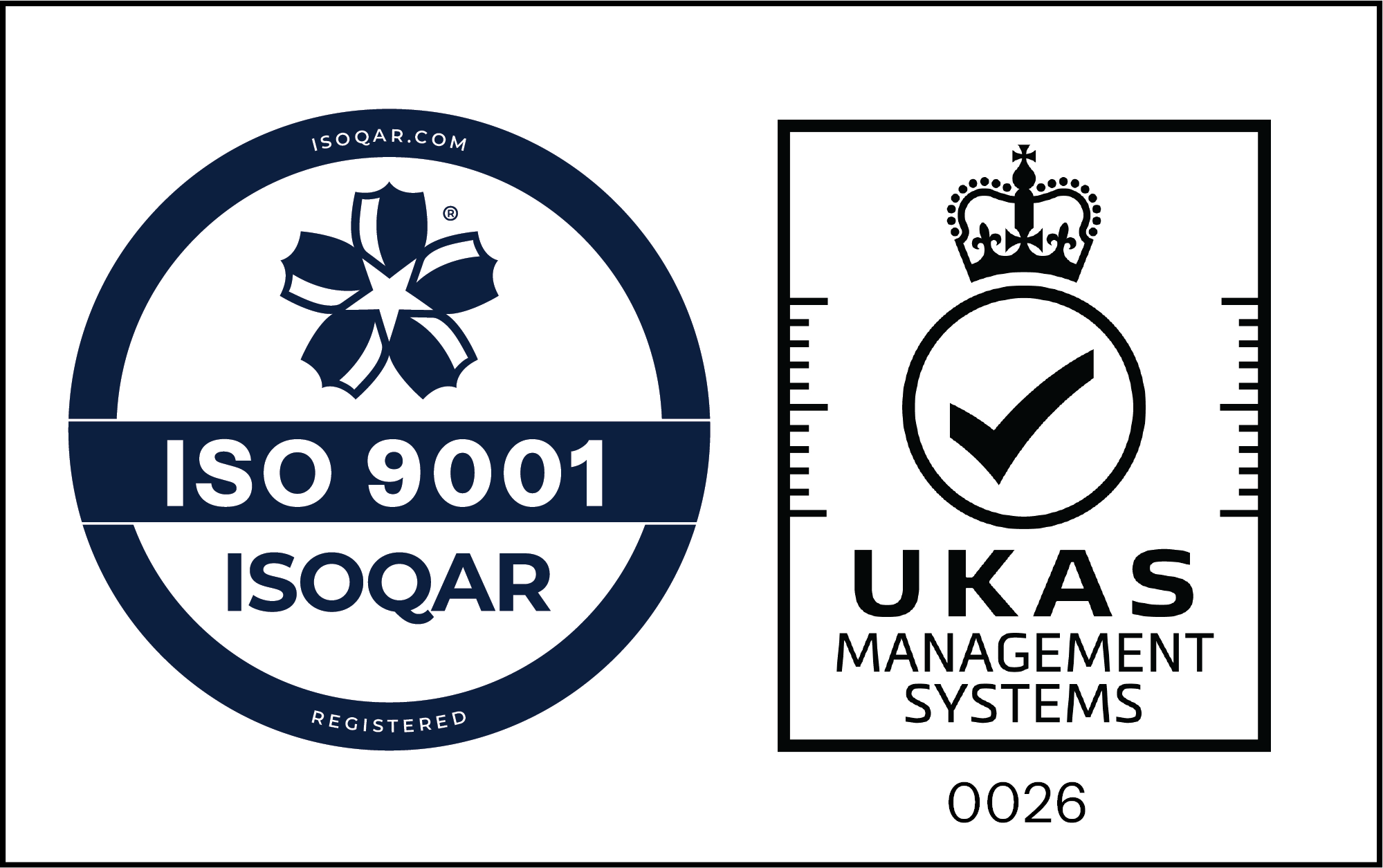Traditional centralised hydraulic systems are heavy and inefficient. They are built with a number of different components, meaning that energy is wasted and efficiencies are throttled. At Domin, we have revolutionised the way hydraulic systems are built, making them much more efficient. In this article, we are going to explore how we build our hydraulic systems, and what makes them better than others.
What Are the Core Units You Need in a Hydraulic System?
There are a number of core components needed to build a hydraulic system. These include:
- Hydraulic pump
- Valves
- Hydraulic actuators such as cylinders or motors
- Hydraulic tank
These elements work together to create a hydraulic system that can transmit power, control movement, and perform a wide range of tasks across various applications, from heavy machinery to industrial automation and even in everyday objects like automotive braking systems.
How Do Hydraulic Systems Work?
A hydraulic system is a mechanical system that uses fluid under pressure to transmit force. It is used in a number of different applications, from aircraft control surfaces and high performance yacht controls to die casting machines and robotic arm actuation.
Hydraulic systems use a specialised lubricating and heat-dissipating fluid – usually hydraulic oil, which is typically stored in a reservoir and circulated through the system. A hydraulic pump generates pressure within the system, taking hydraulic fluid from the reservoir and pressurising it. This high-pressure fluid is then sent around the hydraulic circuit.
Control valves are used to regulate the flow and direction of the hydraulic fluid. By adjusting the position of these valves, the operator can control the movement, speed and force of hydraulic actuators, such as cylinders and motors. The actuators convert the fluid’s energy into mechanical work. Hydraulic cylinders create linear motion, while hydraulic motors produce rotational motion.
When the control valve is adjusted, it directs high-pressure fluid to the actuators. In a hydraulic cylinder, for example, the pressurised fluid enters one side of the cylinder, forcing the piston to move which translates into mechanical linear force. The direction of movement depends on the position of the control valve. After the hydraulic fluid has been used, it returns to the reservoir.
What Is the Difference Between Open and Closed Hydraulic Systems?
There are two different types of hydraulic systems: open and closed. Open and closed hydraulic systems represent distinct methods for regulating pressure within the pump, a practice that serves to mitigate wear and tear.
What is an open hydraulic system?
In an open system, the pump operates continuously, allowing oil to move through the system without any build up of pressure. They can employ multiple pumps to power different systems like steering or control.
Both the pump’s inlet and the return valve connect to a hydraulic reservoir, often referred to as “open centre” systems due to the unobstructed central path of the control valve when in a neutral position.
In this setup, hydraulic fluid returns to the reservoir. Sometimes a relief valve is included to direct surplus fluid back to the reservoir, with filters typically in place to maintain the cleanliness of the system.
Open systems are generally well-suited for low-pressure applications, offering cost-effective and straightforward maintenance. However, they can generate excess heat within the system if the pressure exceeds valve settings.
What is a closed hydraulic system?
A closed system links the return valve directly to the hydraulic pump inlet. It relies on a single central pump to circulate the fluid within a closed loop. A valve diverts oil from the pump to an accumulator where it remains pressurised, but stationary until activated.
A charge pump supplies cool, filtered oil to the low-pressure side, sustaining pressure within the loop. Closed systems are often found in mobile applications – such as tractors, forklifts and bulldozers – with hydrostatic transmissions and employ a single pump to power multiple systems.
These systems allow for smaller reservoirs since they only need enough fluid for the charge pump, which is relatively compact. Closed systems provide greater flexibility than open systems, but are slightly more expensive and have a more complicated repair process. Closed systems can function with less fluid in narrower hydraulic lines, and their valves can reverse the flow’s direction.
If necessary, it can be possible to convert an open system into a closed system, by replacing specific components and making provisions for the oil’s return journey.
Why Are Traditional Hydraulic Systems Inefficient?
The challenge with traditional hydraulic systems in diggers and complicated systems on aircraft is their heavy weight and inefficiency because of the extensive network of pipes and hoses and the numerous components such as pumps, valves, and tanks. They are often deemed inefficient due to various factors. One primary issue lies in energy loss, where friction within the fluid, leaks, and dissipated heat contribute to a notable reduction in overall efficiency. The continuous operation of the pump in these systems, regardless of whether the system is actively performing work, is another factor leading to unnecessary energy consumption.
Pressure control poses a challenge in traditional hydraulic systems, often resulting in the generation of excess pressure and subsequent energy wastage. The inherent complexity of these systems, with numerous components like valves, hoses, and pumps, introduces points of potential failure, contributing to energy losses and decreased efficiency.
The efficiency of traditional hydraulic systems is further hindered by the use of inefficient valves, which can lead to pressure drops and increased energy consumption. Heat generation during operation is a common issue, with excessive heat causing a decrease in fluid viscosity and increased wear on system components, ultimately reducing overall efficiency. Additionally, the limited feedback control mechanisms in traditional hydraulic systems make it difficult to optimise performance and respond promptly to changes in load or operating conditions.
Many traditional hydraulic systems lack regenerative capabilities, meaning that energy generated during the deceleration of loads is not effectively captured and reused, resulting in energy wastage. High maintenance requirements, including addressing fluid leaks and worn components, contribute to reduced efficiency if not promptly addressed. Despite these challenges, advancements in hydraulic technology, such as variable-speed pumps, improved valve designs, and smart control systems, aim to mitigate these efficiency issues in modern hydraulic systems. Furthermore, alternative technologies like electric drives and hybrid systems are being explored as more energy-efficient options in specific applications.
How to Build a Hydraulic System
Building a hydraulic system can be complex. The Domin approach to designing hydraulic systems is fundamentally different to the traditional approach. We go back to the drawing board and look at hydraulics from a different angle to make sure that systems operate efficiently without compromise on performance. We use our core technology, architectural strategy, and quality control tactics to design systems that are completely unique from anything that has happened before.
Our approach to building hydraulic systems focuses on using energy in the most effective and efficient way. Our strategic use of additive manufacturing allows for the production of compact and powerful components, ultimately reducing overall weight, and onboard modern electronics enables us to create distributed systems that are electrically controlled, electrically signalled. This removes the need for conventional pipes and hoses, replacing them with electro-hydrostatic actuators that are connected by wires. This is demonstrated in our products for flight control actuation and brake-by-wire systems, which will enable more electric aircraft, and active suspension that will extend the range of electric vehicles by an additional 10%, all without compromising performance.
How Domin Have Revolutionised the Hydraulics Industry
Here at Domin, we have transformed the design and production of hydraulic systems. Explore this topic further in our blogs on the fundamentals of hydraulics and its association with Pascal’s Principle or the components of hydraulic systems.
Our groundbreaking products bring sustainability, cost-effectiveness, and reliability to the forefront, making a significant departure from conventional hydraulic solutions prevalent in the aerospace, automotive, and industrial sectors.
To understand how our pioneering hydraulic products can help you improve the efficiencies of your systems, contact our Sales team.

